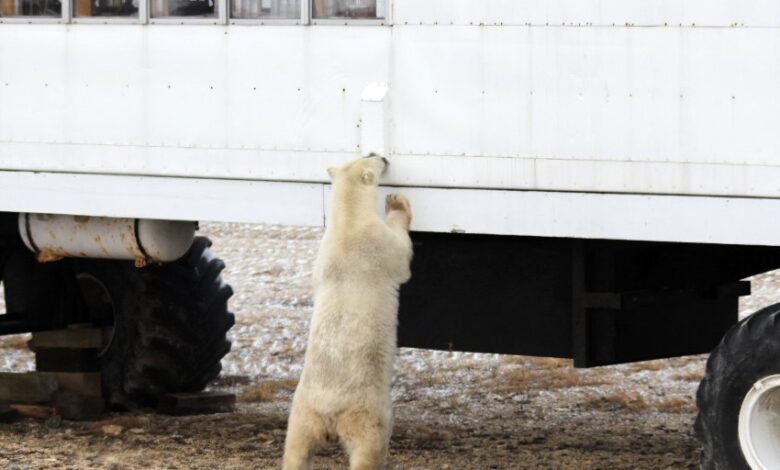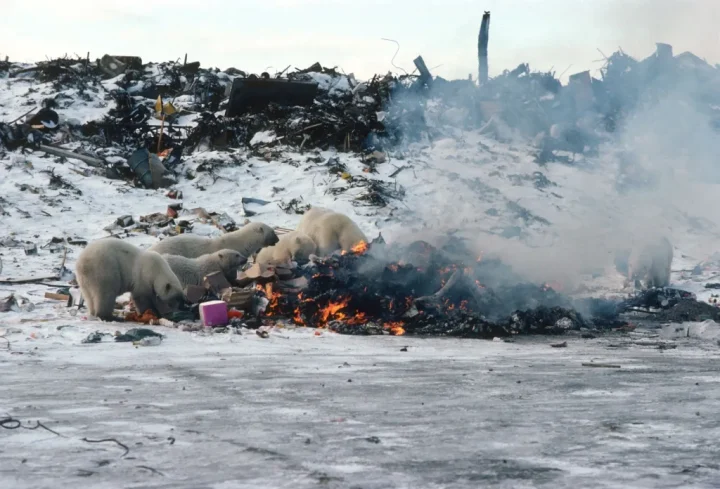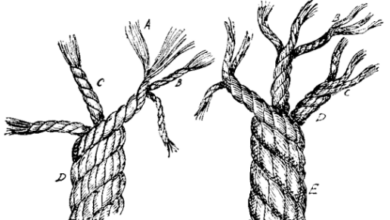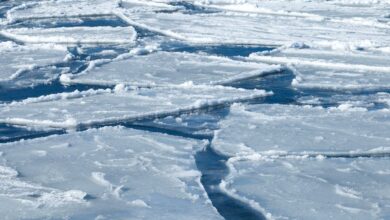New Paper Polar Bears Attracted to Garbage Dumps Blames Lack of Sea Ice Without Any Evidence – Watts Up With That?

Dr. Susan Crockford
A paper published yesterday discusses polar bears that get into human garbage and cause other problems due to community attractants. Most of the incidents recounted and the issues they’ve raised have been reported by the media and are ones I’ve discussed here over the last few years in detail, including here and here, as well as in my recent book (Crockford 2019).

All you need to know about the motivation behind the paper comes from the authors’ acknowledgement:
This paper developed from a meeting in Churchill, Manitoba, in autumn 2019 where the issue of dump use by polar bears arose. We thank Dan Cox [a photographer for PBI] for suggesting exploration of this issue and Polar Bears International for arranging this meeting.
So, six months or so after my book came out in March 2019, in which these issues were discussed in detail, polar bear experts decided it was time to write a paper on the topic. The open access paper, by Tom Smith and colleagues (Smith et al. 2022), is accompanied by an online essay published the same day by the lead author and picked up at least one cheer-leading media outlet via Reuters. See what you think.
The authors state in their abstract:
In contrast [to brown and black bears], the use of anthropogenic foods by the polar bear Ursus maritimus
is less common historically but is a growing conservation and management issue across the Arctic.
However, ‘less common historically’ means within the last few decades: before that time, such issues in the Far North were rarely, if ever, reported. Like a paper from a few years ago on deadly polar bear attacks (Wilder et al. 2017), this paper fails to acknowledge that Inuit and other indigenous peoples lived with polar bears for thousands of years before there were firearms for protection. Smith and colleagues summarily dismiss the undocumented deaths and damage that polar bears must have caused over that time.
Of the six ‘case studies’ featured in the paper (see map below, their Fig. 1), most of the information came from newspaper articles rather than from local authorities or their reports, a disappointing feature for an essay purporting to be ‘science’. I expected the authors would have used their unique connections to fill in the details on some of the recent news stories but they did not. And oddly, their ‘cases’ did not include the earliest and most famous one, of William Barents and his crew whose food stores were constantly plundered by polar bears over the winter of 1596-1597 (De Veer 1609).
Churchill, Manitoba
The story of Churchill’s history of polar bear problems, which began in the 1960s as polar bear numbers were increasing at the same time as thousands of military personnel occupied the area, seems quite glossed over in this new paper, especially since it is so well documented (see the monograph by Ian Stirling and colleagues, 1977, also Kearney 1989). The carnage of polar bear deaths that resulted from their attraction to the town dump, dog yards, and other food smells, especially between 1966 and 1975, is totally brushed over by these authors.
Lack of sea ice was not an issue at that time and yet, the situation of human attractants was arguably more serious (attracting 60-80 bears at a time into the community some years) than any of the more recent incidents mentioned in the Smith paper, since as well as the large number of bears that were shot in self defense, at least one person died, many dogs were killed by bears, and serious damage to property had occurred before solutions were implemented. The town dump was not closed until 2005, decades after the worst of the problems occurred.
The bears causing so much havoc in Churchill in the 60s and 70s could not be said to be desperate for food due to lack of sea ice or part of a declining population, so of course the seriousness of the problem at that time had to be down-played.
Arviat, Nunavut
Arviat, a community of about 3,000 that sits on the shore of Western Hudson Bay just north of Churchill, has been having problems with polar bears for more than a decade.
In 2016, it was bears digging up human graves in the local cemetary. In early July 2018, a local Inuk father was fatally mauled by a bear just outside the community, where no human attractants existed.
Belushya Guba, Novaya Zemlya, Russia
I’ve addressed this major incident from February 2019 in detail (with sea ice charts) of dozens of bears invading a community garbage dump but it gets one paragraph in the paper. The authors assume the phenomenon was caused by lack of sea ice but provide no evidence that this was actually the case [my bold]:
“Although polar bears had visited the dump in previous years, this event was unprecedented and likely the result of a lengthened on-shore fasting period because of the loss of sea ice in the region.”
Despite assurances from the authors that in most cases, problem bears retreat to the sea ice once it is available, although ice was abundant offshore many of the bears on Novaya Zemlya only left after they were persistently harassed by the military.
Ryrkaypiy, Chukotka, Russia
I’ve also addressed this incident, from December 2019, in detail. The authors mention the garbage dump near Ryrkaypiy as an attractant but not the hundreds of walrus (dead by natural causes, which is what the bears in the photo below are feeding on), laying at the foot of Cape Schmidt less than 1km away.
Several news reports at the time commented that adult males drove juvenile bears away from the walrus carcasses, and that these made up the majority of problem bears at the dump and around the town. Several reports from WWF informants claimed the bears were in poor condition (of course they would) but the photos provided showed otherwise: virtually all the bears were fat.
It is clear that using information from only one source and not actually checking the sea ice conditions at the time led the authors to the following erroneous conclusion:
Once the sea ice formed and thickened, polar bears returned to the Chukchi Sea. This case illustrates that
sea-ice conditions and polar bear body condition are predictors of human–polar bear conflicts and, as in other areas, dumps are an attraction to polar bears and can increase the numbers of problem animals in settlements. [Smith et al. 2022:4]
Kaktovik, Alaska
Here the attractants are the bowhead whale carcasses remaining after subsistence whaling by local Inuit. Bears attracted to the bone piles sometimes wander into the community and cause damage or threaten people, which I’ve discussed previously.
The authors admit that the town dump had been a problem attractant even before the bowhead whale remains became an issue in the early 2000s:
Polar bears that were once drawn to the now protected Kaktovik community dump are attracted by bowhead whale remains following hunter harvesting…This case study illustrates the challenges facing northern communities where traditional harvesting activities interact with climate warming-driven shifts in polar bear distributions and with their increased reliance on anthropogenic food. [Smith et al. 2022:5]
First Nations coastal communities in Ontario, Canada and others
I’ve not written about the specific Southern Hudson Bay incidents mentioned in this case study. Three recent incidents of bears at town dumps are covered (subsequently shot or relocated), in Kashechewan (July 2016) and Moose Factory (December 2015 and December 2020).
In addition to the above cases, mention is made in the paper of the fatal attack on an Inuk hunter by a polar bear at Naujaat, Nunavut (Foxe Basin) in August 2018, which I have written about here and here, as well as in my book. Without any evidence whatsoever, the authors attempt to blame this tragic incident on human attractants, stating:
“It is possible, but uncertain, that anthropogenic scents (e.g. food, harvested animals) at the camp could have attracted these polar bears”. [Smith et al. 2022:6]
They also failed to mention that along with the female and her yearling cub who initiated the attack, three other bears attracted to the carnage were also shot (although it was later revealed only two bodies were found). This incident could not in any way be blamed on lack of sea ice: the surviving hunters waited days to be rescued because an icebreaker was required to deal with the thick ice that trapped them onshore.
Demographic change effects ignored
Smith and colleagues put most of the blame for an apparent recent increase in problem bears on declining sea ice but make no mention of the well-known phenomenon of food stealing perpetrated by mature males against younger, smaller individuals (Stirling 1974). Young bears 2-3 years old, especially young males, are responsible for the majority of attacks on humans and problems in communities in part because older males often drive them away from available food.
Total hunting bans and restricted hunting of polar bears across the Arctic have resulting in growing populations that almost certainly contain more mature males than existed for most of the 20th century. As a consequence, more food-stressed young bears surely appear every year, which means more 2-3 year olds desperate enough to attack humans, get into garbage dumps, or enter communities looking for food.
This phenomenon is likely the basis for Ian Stirling’s comment in 1976 about the total ban on hunting in Norway (which I discussed in an essay about human/polar bear conflicts, with references):
“Dr. Stirling felt that complete cessation of hunting, such as exists in Norway, may increase bear-man conflicts. Dr. Reimers replied that the careful harvesting of polar bears was probably desirable, but the total ban now in effect was largely an emotional and political decision rather than a biological one. Last year four bears were killed in self-defense.” [1974 PBSG meeting “Norway – progress reported by [Thor] Larsen”; Anonymous 1976:11]
Overall, the authors present garbage and other human attractants as another threat to the survival of polar bears, on top of the ‘disappearing sea ice’ they claim is causing bear numbers to decline because the bears are in such poor condition. They state:
Consequently, polar bears will be drawn to anthropogenic food in more locations across the Arctic and for longer periods, thus threatening their survival and human safety. This growing conflict will be most prominent in locations where human settlements already overlap with areas where polar bears wait for sea-ice formation. [Smith et al. 2022:7]
Overall impression
Smith and colleagues conclude that more needs to be done to deal with bear attractants in Arctic communities but that the methods used so effectively in Churchill are expensive and require money these villages simply don’t have.
I pointed out this obvious point in March 2019 in my book, The Polar Bear Catastrophe That Never Happened (2019:133). These authors are pretending they didn’t read my book (they certainly don’t cite it) but their paper seems to be a clear attempt to refute my books main conclusion.
While Smith and colleagues argue it is more people plus less ice (and thus starving bears) that attract bears to Arctic communities and garbage dumps, my conclusion (last paragraph in the book) was that growing polar bear numbers plus more people are the critical criteria:
In the 21st century, the biggest conservation challenge may be helping Arctic communities cope with increasing numbers of potentially deadly and destructive polar bears without having to kill too many bears.
This is the reality that lies ahead, because the polar bear catastrophe that was promised back in
2007 failed to materialise. And despite decades of handwringing, polar bear numbers are not only higher than 50 years ago, but may be much higher than leading polar bear specialists are willing to entertain, perhaps as high as 39,000 (range 26,000–58,000).While it is true that too many bears is not the future polar bear specialists envisioned, it is the real-life consequence of the fact that the polar bear is a species fully adapted to living in ever-changing Arctic conditions. Almost overnight, the conservation success story has morphed into an evolving saga of tenuous co-existence between flourishing polar bears and terrified Arctic residents. [Crockford 2019:134]
References
Anonymous 1976. Polar Bears: Proceedings of the 5th meeting of the Polar Bear Specialists Group IUCN/SSC, 3-5 December, 1974, Le Manoir, St. Prex, Switzerland. Gland, Switzerland IUCN.
Crockford, S.J. 2019. The Polar Bear Catastrophe That Never Happened. Global Warming Policy Foundation, London. Available in paperback and ebook formats.
De Veer, Gerrit. 1609. The Three Voyages of William Barentsz to the Arctic Regions (English trans.). http://archive.org/details/cihm_18652 [downloaded 19 December 2012]
Kearney, S.R., 1989. The Polar Bear Alert Program at Churchill, Manitoba. In: Bromely, M. (Ed.), Bear–People Conflict: Proceedings of a Symposium on Management Strategies, Yellowknife, Northwest Territories Department of Renewable Resources, pp. 83–92. [courtesy M. Dyck, Gov’t of Nunavut] Pdf here.
Smith, T.S., Derocher, A.E., Mazur, R.L., York, G., Owen, M.A., Obbard, M., Richardson, E.S. and Amstrup, S.C. 2022. Anthropogenic food: an emerging threat to polar bears. Orynx 1-10. [Open access] https://doi.org/10.1017/S0030605322000278
Stirling I, Jonkel C, Smith P, Robertson R, Cross D. 1977. The ecology of the polar bear (Ursus maritimus) along the western coast of Hudson Bay. Canadian Wildlife Service Occasional Paper No. 33. pdf here.
Wilder, J.M., Vongraven, D., Atwood, T., Hansen, B., Jessen, A., Kochnev, A., York, G., Vallender, R., Hedman, D. and Gibbons, M. 2017. Polar bear attacks on humans: implications of a changing climate. Wildlife Society Bulletin, in press. DOI: 10.1002/wsb.783 http://onlinelibrary.wiley.com/doi/10.1002/wsb.783/full




